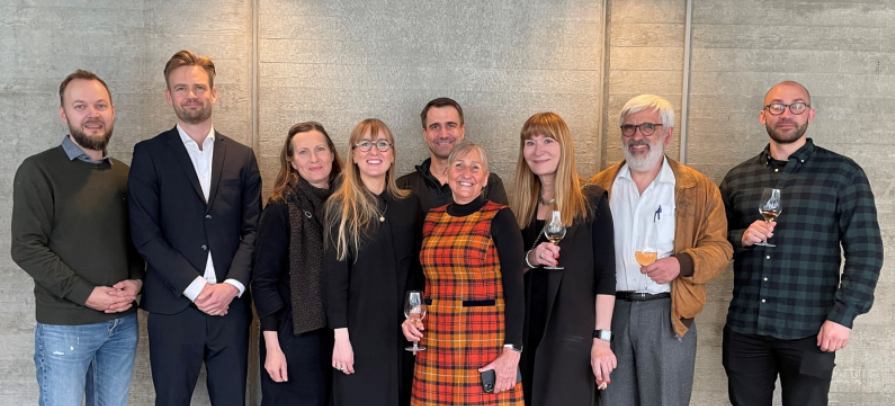Sissal Sigmundsdóttir Djurhuus vart ph.d. um venjing móti krabba
Fríggjadagin 1. apríl vardi Sissal Sigmundsdóttir Djurhuus ph.d.-ritgerð sína við Københavns Universitet.
Hon hevur arbeitt á Centre for Physical Activity Research (CFAS) á Ríkissjúkrahúsinum og verið innskrivað á Institut for Klinisk Medicin á Københavns Universitet.
Granskingin hevur snúð seg um, hvørt tað við há-intensari venjing nógvar ferðir um vikuna ber til at fáa fleiri immunkyknur inn í krabbaknykilin hjá monnum við prostatakrabba. Immunkyknur kunnu drepa krabbakyknur.
Toymið kannaði 30 luttakarar. Komið varð fram til, at tey, sum vandu oftast, eisini høvdu ein størri vøkstur í immunkyknum í krabbaknyklinum. Hetta úrslitið bendir á, at tað er ein samanhangur millum tal av venjingum og inntreingjan av immunkyknum í krabbaknykilin.
Í metingarnevndini vóru Anna Campbell, professari úr Napier University Edinburgh, Mads Hvid Poulsen, MD, ph.d. frá Odense Universitetshospital og Mikkel Mejlgaard Fode, lektari á Københavns Universitet, formaður.
Høvuðsvegleiðari var Klaus Brasso, professari á Københavns Universitet. Hjávegleiðarar Bente Klarlund Pedersen, Pernille Højman†, Jesper Frank Christensen, Birgitte Grønkjær Toft og Casper Simonsen.
Heitið á ritgerðini er: "The Effect of Exercise Training on Tumor Biology in Humans - Exploration of Exercise-Induced Tumor NK Cell Infiltration and Alleviation of Hypoxia as Anti-Cancer Mechanism in Men with Prostate Cancer". Tvær greinar frá ph.d.-arbeiðinum eru ávegis til útgávu.
Á myndini er Sissal Sigmundsdóttir Djurhuus (nr. 4 frá vinstru) saman við vegleiðarum og metingarnevndini.
Summary
This thesis aimed to explore acute and chronic effects of exercise on tumor-specific outcomes using human prostate cancer (PCa) as an exercise-cancer model. Epidemiological evidence has shown beneficial effects of post-diagnosis physical activity on numerous cancer outcomes. Yet, the underlying anti-cancer mechanisms mediating the beneficial effects of exercise remain uncertain. Recently, increased attention has been directed towards uncovering potential biological mechanisms in preclinical studies, and thus several candidate mechanisms have been suggested. Tumoral natural killer (NK) cell infiltration and reduction in tumor hypoxia have been proposed as mechanisms modifiable by acute and repetitive exercise. Still, the effect of exercise on these outcomes is yet to be uncovered in humans.
In this thesis, the effect of exercise on tumor-specific outcomes was explored with two main objectives. Firstly, to explore the effects of one high-intensity exercise bout on tumor hypoxia and NK cell infiltration and to explore the association between these and microvessel density (MVD). Secondly, to explore the effects of a preoperative high-intensity exercise training intervention on tumor NK cell infiltration in a real-life setting in patients with PCa.
In a randomized controlled trial (RCT), we found no effect of a single exercise bout on tumor hypoxia or tumor NK cell infiltration. Furthermore, we found no association between MVD and hypoxia and NK cell infiltration. The data indicate that one bout of exercise may not be sufficient to elicit changes in these outcomes. When exploring the accumulative effects of repeated bouts of acute exercise on tumor NK cell infiltration in another RCT, we found no between-group difference. However, exploratory analyses demonstrated an increased NK cell infiltration in the tumor in a dose-dependent manner. Although designed with different purposes, the findings from the two studies indicate that exercise may hold the potential to impact tumor tissue directly; however, the mechanism requires the accumulation of single bouts of exercise to impact NK cell infiltration. This thesis provides important translational data and bridges preclinical discoveries in animals models with a clinical setting. Indeed, the thesis draws attention to the potential ability of exercise to impact tumor-specific outcomes.
Eitt yvirlit yvir almannakunngjørdar greinar hjá Sissal sæst her
